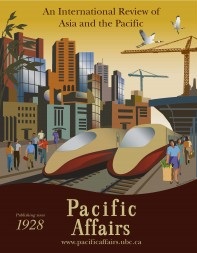Memo #18
By: Pacific Affairs
 Developed economies throughout the Asia Pacific region are grappling with how to design immigration policies that balance domestic concerns about labour shortages with respect for human rights and the need to maintain good bilateral relations with sending countries. In 2008, the Australian government piloted a scheme for bringing seasonal workers from four Pacific Island countries (Papua New Guinea, Kiribati, Tonga, and Vanuatu) to fill the gaps in Australia’s horticultural industry.
Developed economies throughout the Asia Pacific region are grappling with how to design immigration policies that balance domestic concerns about labour shortages with respect for human rights and the need to maintain good bilateral relations with sending countries. In 2008, the Australian government piloted a scheme for bringing seasonal workers from four Pacific Island countries (Papua New Guinea, Kiribati, Tonga, and Vanuatu) to fill the gaps in Australia’s horticultural industry.
As Therese MacDermott and Brian Opeskin explain in “Regulating Pacific Seasonal Labour in Australia,” the 2008 plan was carefully conceived so as to avoid some of the problems of earlier schemes. Specifically, Canberra (the capital city of Australia) wanted to avoid accusations that Australian growers were exploiting these workers.
The scheme’s ambitions went beyond simple concerns for labour shortages. The Australian government also described it as a tool for strengthening bilateral relations with its Pacific Island neighbours and even for contributing to these states’ internal stability and security.
MacDermott and Opeskin argue that Canberra’s cautious approach may have imposed its own costs. Under the new scheme, seasonal migrants are contracted by government-approved “labour hire companies,” rather than by growers themselves. This arrangement allows for considerable government oversight to ensure that workers are treated fairly. But the authors also note that the scheme is wrapped in a dense web of government regulation that has deterred many growers from using it. The cost to the taxpayers of $24 million for establishing, monitoring and evaluating the pilot program totaled about two-thirds of the estimated wages paid out in the program. And the number of participants has been very low.
Australia’s pilot program may well be judged less successful than its New Zealand model. Unfortunately, the most immediate alternative is a return to the traditional patterns of seasonal labour including dubious contractors and undocumented workers. Like all temporary worker schemes, the challenge is how to enable foreign workers to exploit new employment opportunities without themselves being exploited.
About the Author:
Pacific Affairs is a peer-reviewed, independent, and interdisciplinary scholarly journal focusing on important current political, economic and social issues throughout Asia and the Pacific.
Links:
- MacDermott, Therese & Opeskin, Brian, “Regulating Pacific Seasonal Labour in Australia,” Pacific Affairs, volume 83, No. 2, June 2010
- Aust, NZ look to Pacific for workers, TVNZ, August 2008
- Pacific guest workers are welcome, but conditions apply, The Age, August 2008
Related Memos:
- Our other Memos about Australia
- Other Memos inspired by Pacific Affairs articles